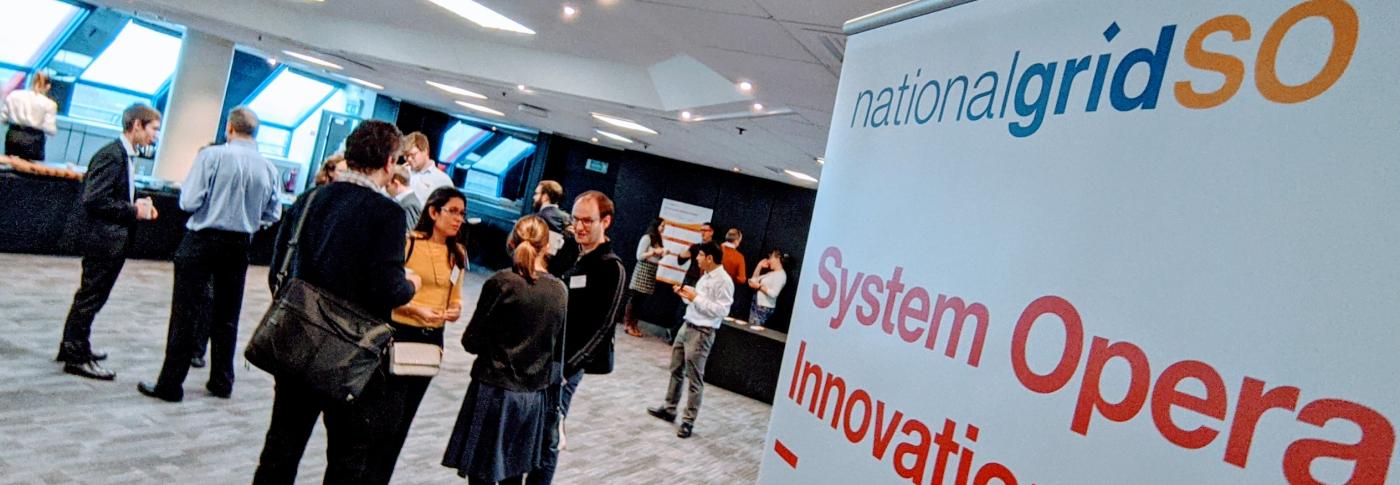
How our Open Innovation event is helping industry tackle challenges together
10 Dec 2019 - 3 minute read
Carolina Tortora, head of innovation strategy at National Grid Electricity System Operator (ESO), reflects on how our Open Innovation Event is helping industry tackle challenges together.
At National Grid ESO we’re on a mission to make sure we’re able to operate Great Britain’s grid carbon free by 2025. If we’re to meet that ambitious target and deliver a secure and low-carbon energy future, it’s essential that we think outside the box and explore new approaches that will help us transform the electricity system for the twenty-first century.
We know that a lot of the best, most innovative and disruptive ideas to achieve our net-zero goals will come from working with partners outside our organisation. That’s why we’re taking action to collaborate with industry, academia and other innovators to develop projects that address our electricity innovation priorities.
Those priorities – digital transformation, system stability and the whole electricity system – are already the focus of several exciting initiatives with innovation partners. For example we’re working with the University of Sheffield on a data modelling project to map “invisible” solar panels on rooftops across the UK, boosting our ability to monitor and forecast renewable energy generation. We’ve also teamed up with the Met Office to improve weather forecast accuracy, and with the Alan Turing Institute to harness the power of machine learning for solar power prediction.
But we’re always looking ahead to the next opportunity to collaborate and broaden our portfolio of innovation projects. Our latest open innovation call invited the brightest minds from around Great Britain to pitch ideas around our top three priority areas. We received an amazing 87 entries, and had a tough job whittling them down to around a dozen ideas to take forward to our Open Innovation Event finals in Birmingham recently.
Our two-day event gave these innovators the opportunity to work alongside experts – including from the ESO, Western Power Distribution (WPD), SSE and UK Power Networks – to take their ideas from a concept to a fully-fledged project proposal. These projects could secure funding from Ofgem’s Network Innovation Allowance (NIA) or become the next Network Innovation Competition (NIC) proposal.
Among the best ideas were new ways to use machine learning and leverage data in our Electricity National Control Centre (ENCC), and how we can use new modelling techniques to shore up system stability as we move towards operating a zero-carbon, low inertia system.
Innovations around electric vehicles (EVs) and charging infrastructure really caught our eye. To give some context to the scale of the challenge EVs present, the ESO’s latest Future Energy Scenarios report envisages 35 million EVs on the road by 2050. That’s a huge increase and transformation in demand on the grid as people charge their cars at work during the day or plug them in at home over night.
But we needn’t look at this as a problem. Instead, with innovations around vehicle-to-grid (V2G) technology – which is the focus of one proposal we’re developing – EVs could become a major part of the solution to how we balance and stabilise the grid in the future, allowing cars’ batteries to supply power to, or take it from, the electricity network.
The first step to innovating and creating a solution to a challenge is often the most difficult. But we’re looking forward to moving ahead with these projects and helping to turn them into reality. It wouldn’t be possible to make a success of them without close collaboration and an open-door approach to innovation – but that’s the cornerstone of our innovation strategy. We’re proud to be a partner to a wide range of innovation stakeholders, and to be tackling the challenges of a changing energy industry together.
